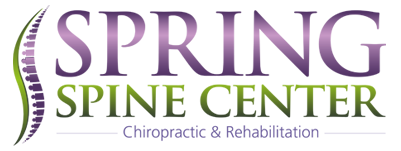Low back pain is a common and often debilitating issue that many individuals face. At Spring Spine Center, we understand the complexities of low back pain and its potential to refer pain to other areas, such as the gluteal muscles, pelvis, and hips. By understanding these pain patterns, patients can better manage their symptoms and seek appropriate treatment.
Anatomy of Low Back Pain Referral
The low back, or lumbar spine, comprises five vertebrae (L1-L5) that bear much of the body’s weight and facilitate movement. Surrounding these vertebrae are muscles, ligaments, tendons, and nerves that work together to provide stability and mobility. When any of these structures are compromised due to injury or inflammation, pain can radiate to adjacent areas, resulting in what is known as referred pain.
Common Pain Referral Patterns
- Pain in the Gluteal Area
One of the most frequent referral patterns of low back pain involves pain radiating to the buttocks, specifically the gluteal muscles. Patients often describe this pain as dull, achy, or even sharp, sometimes accompanied by numbness or tingling. This referred pain is often linked to sciatic nerve irritation, commonly known as sciatica. Conditions such as herniated discs, spinal stenosis, or piriformis syndrome can lead to this type of pain.
- Pain in the Pelvic Region
Low back pain can also refer to the pelvic region, which includes the sacrum and coccyx bones, as well as the hip joints. This pain is often deep and throbbing and can be aggravated by activities like bending, lifting, or prolonged sitting. Sacroiliac joint dysfunction, where the joint connecting the sacrum to the pelvis becomes inflamed or irritated, is a common cause of pelvic pain referral from the low back.
- Pain in the Hip Area
Referred pain from the low back can extend to the hips, affecting the hip joints and surrounding muscles. Patients may feel pain on the sides of the hips or deep within the joint, often described as sharp and intense, particularly during weight-bearing activities like walking or climbing stairs. Conditions such as arthritis, bursitis, or lumbar spine issues affecting the nerves that innervate the hip region can lead to this type of pain.
Diagnosing and Treating Referred Low Back Pain
At Spring Spine Center, we emphasize a comprehensive approach to diagnosing the source of low back pain and its referral patterns. Our process includes a detailed medical history, physical examination, and, when necessary, imaging studies such as X-rays or MRI scans. Treatment options are tailored to the individual and may include:
- Chiropractic Adjustments: Gentle, precise adjustments to realign the spine and alleviate pressure on affected nerves.
- Physical Therapy: Targeted exercises and stretches to strengthen muscles, improve flexibility, and support the spine.
- Massage Therapy: Techniques to relax tight muscles, improve circulation, and reduce pain.
- Lifestyle Modifications: Guidance on posture, ergonomics, and activities to prevent further strain on the low back.
Understanding the referral patterns of low back pain to the gluteal, pelvic, and hip areas is essential for effective management and treatment. At Spring Spine Center, our dedicated team is committed to helping patients identify the underlying cause of their pain and providing personalized care to restore mobility, reduce discomfort, and enhance overall quality of life. If you experience persistent or severe low back pain that radiates to other areas, don’t hesitate to contact us for a comprehensive evaluation and customized treatment plan.
For more information or to schedule an appointment, please call us at 281-376-1288.

